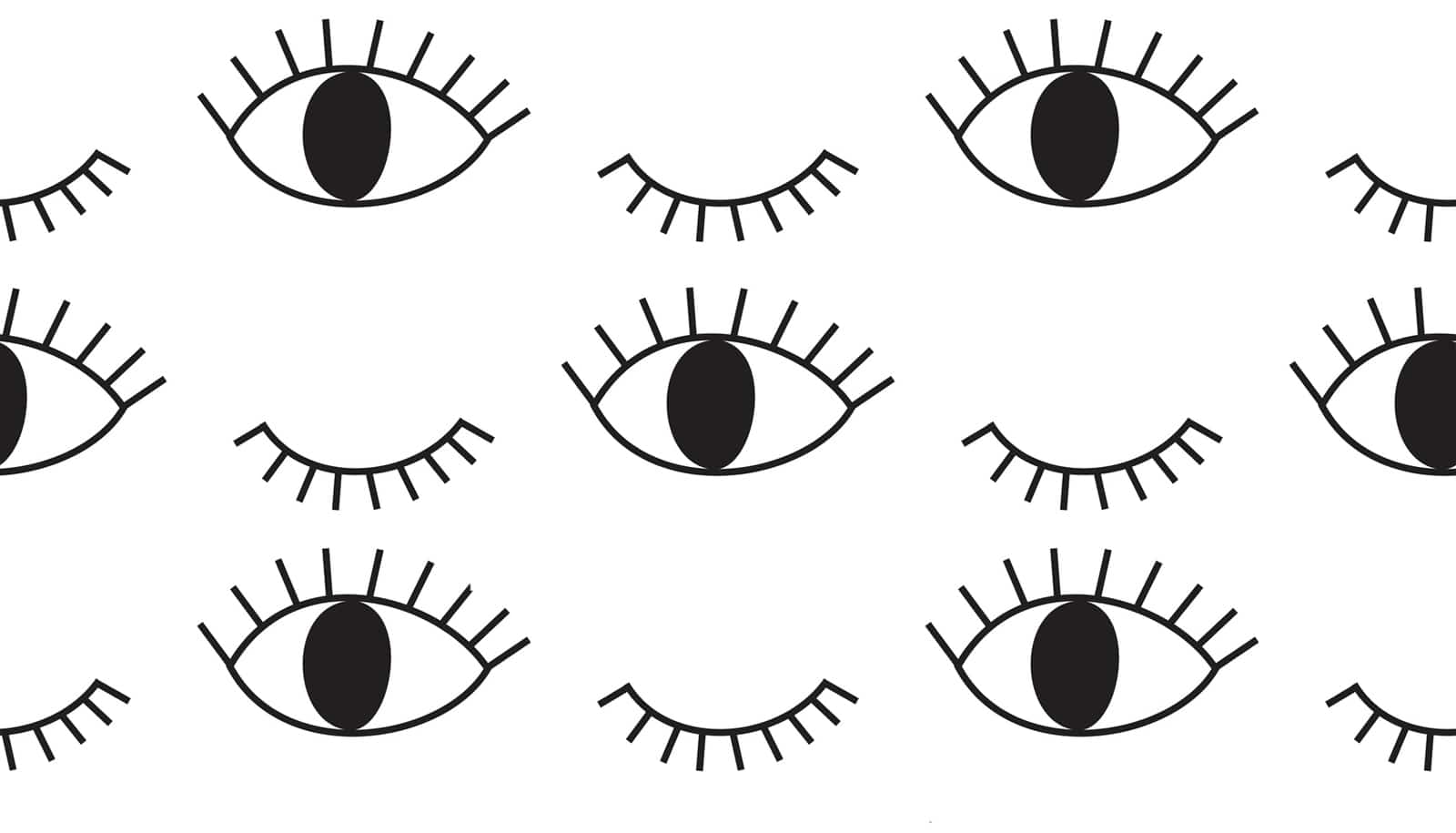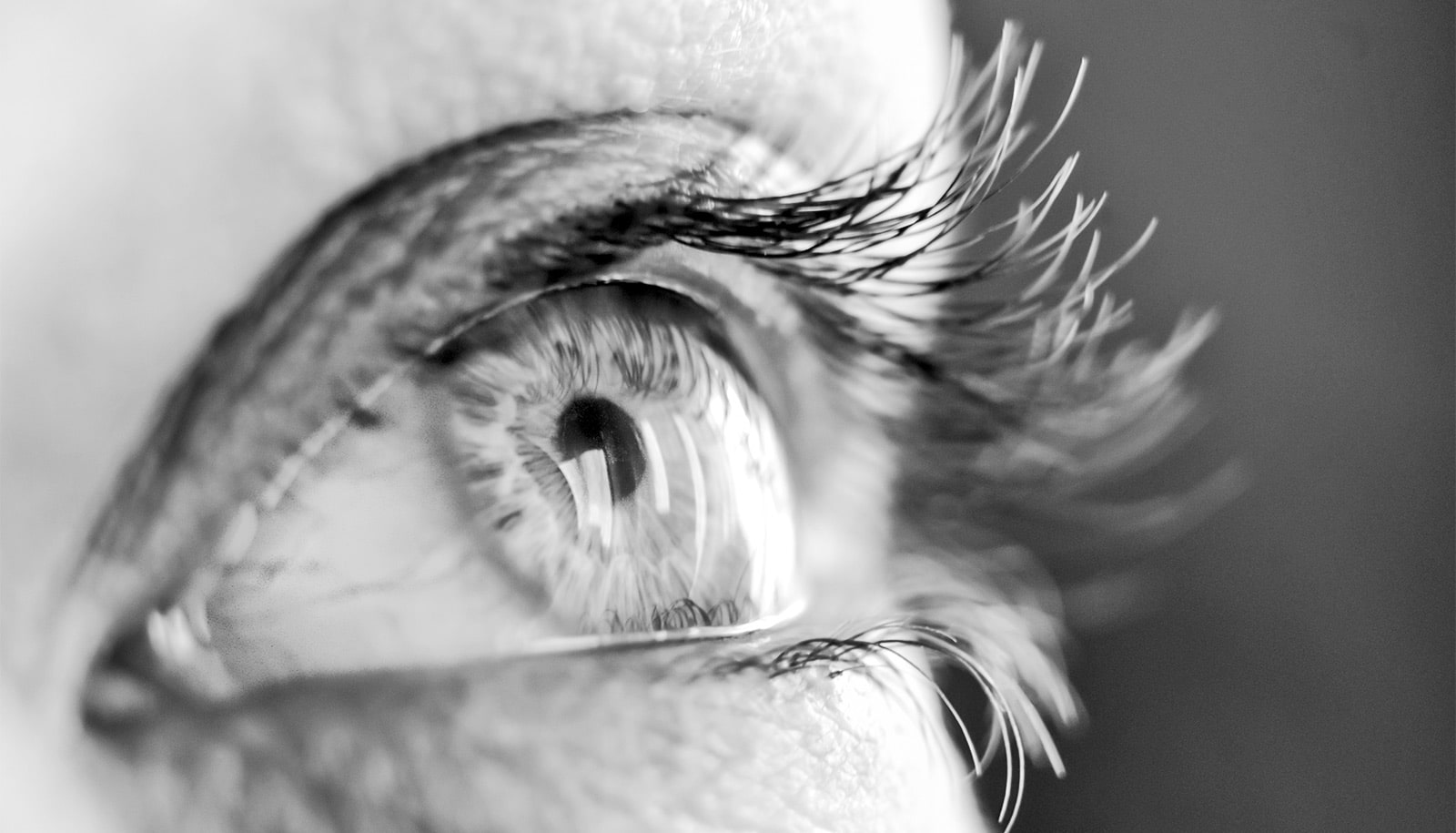Every few seconds, our eyelids automatically shutter and our eyeballs roll back in their sockets. Why don’t we perceive intermittent darkness and light? Because the brain works extra hard to stabilize our vision despite our fluttering eyes.
In a study in the journal Current Biology, researchers show that when we blink, our brain repositions our eyeballs so we can stay focused on what we’re viewing.
When our eyeballs roll back in their sockets during a blink, they don’t always return to the same spot when we reopen our eyes. This misalignment prompts the brain to activate the eye muscles to realign our vision, says study lead author Gerrit Maus, an assistant professor of psychology at Nanyang Technological University in Singapore. He launched the study as a postdoctoral fellow in the University of California, Berkeley’s Whitney Laboratory for Perception and Action.
“Our eye muscles are quite sluggish and imprecise, so the brain needs to constantly adapt its motor signals to make sure our eyes are pointing where they’re supposed to,” Maus says. “Our findings suggest that the brain gauges the difference in what we see before and after a blink, and commands the eye muscles to make the needed corrections.”
Can you sneeze without closing your eyes?
From a big-picture perspective, if we didn’t possess this powerful oculomotor mechanism, particularly when blinking, our surroundings would appear shadowy, erratic, and jittery, according to the researchers.
“We perceive coherence and not transient blindness because the brain connects the dots for us,” says coauthor David Whitney, a psychology professor at UC Berkeley.
“Our brains do a lot of prediction to compensate for how we move around in the world,” says coauthor Patrick Cavanagh, a professor of psychological and brain sciences at Dartmouth College. “It’s like a steadicam of the mind.”
A dozen healthy young adults participated in what Maus jokingly called “the most boring experiment ever.” Study participants sat in a dark room for long periods staring at a dot on a screen while infrared cameras tracked their eye movements and eye blinks in real time.
Our eyes jitter and scientists aren’t sure why
Every time they blinked, the dot was moved one centimeter to the right. While participants failed to notice the subtle shift, the brain’s oculomotor system registered the movement and learned to reposition the line of vision squarely on the dot.
After 30 or so blink-synchronized dot movements, participants’ eyes adjusted during each blink and shifted automatically to the spot where they predicted the dot to be.
“Even though participants did not consciously register that the dot had moved, their brains did, and adjusted with the corrective eye movement,” Maus says. “These findings add to our understanding of how the brain constantly adapts to changes, commanding our muscles to correct for errors in our bodies’ own hardware.”
Additional coauthors are from the Université Paris Descartes.
Source: UC Berkeley



